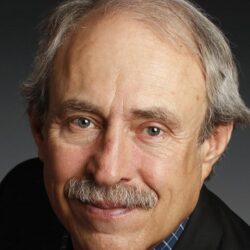CRES has been busy in recent years trying to advance Colorado’s clean energy agenda. The most compelling evidence of success is a law that tilts the table on natural gas. It’s wonky stuff but terribly important if Colorado is to attain its carbon reduction goals.
by Allen Best
About the time that CRES hit a speed bump when it hired a full-time executive director, Colorado also slowed its pace in energy innovation. Gov. John Hickenlooper, who had spoken at the CRES 2010 annual meeting in Montrose, was popular but was seen by many in the environmental community as sluggish. Too, the Legislature was divided politically during his years in the governor’s mansion. Always, bipartisan legislation is best. In important cases it’s useful to have majorities.
Those majorities arrived in the 2018 election along with the election of Jared Polis as governor. Wealthy from shrewd investments and with sharp political instincts, Polis had announced his gubernatorial campaign in Pueblo at Solar Roast Coffee. If elected governor, he said in his Main Street announcement, he would push Colorado to 100% renewables by 2040. He breezed to victory. Renewables had gone mainstream.
A month later, Xcel Energy officials staged a public announcement in the sunshine-splashed atrium of the Denver Museum of Nature and Science. They proclaimed their intent to dramatically reduce carbon emissions from electrical generation by 2030 and expand that to emission-free electricity by 2050. A week later, directors of Platte River Power Authority, the utility serving four northern Colorado cities, announced an even more ambitious target: 100% renewable energy by 2030. Holy Cross in 2020 adopted the same goal for its service territory in the Vail-Aspen-Rifle area but without conditions.
In the early months of 2019, Colorado legislators adopted a deluge of bills built around the idea of pivoting rapidly to renewables. Amid solar panels in Arvada, Polis signed a law that formally created the framework for building what Ritter had long before described as a New Energy Economy.
CRES has tried to flex more muscle in this friendly atmosphere. Singularly important has been the CRES policy committee. The 12 to 15 members meet by conference call or video about an hour weekly during the legislative session and bi-weekly during other months. The policy committee has a diversity of voices and opinions but tends to consist of the wizened elders. For example, while 10 out of 12 people participating in the MCRES chapter are under age 40, the inverse holds true for the policy committee.
Policy members take on responsibility for researching individual topics, helping decide whether CRES wants to get engaged and how. In some cases, this involves meeting with legislators, other times in giving testimony to legislative committees. CRES has also had a more robust presence in proceedings of the Colorado Public Utilities Commission.
Rebecca Cantwell has been a member of this committee. She has worked policy from several sides. She had worked for Tim Wirth when he was a U.S. representative from Boulder and adjoining areas, then became a Denver journalist for 16 years. While at the Rocky Mountain News, she covered the evolution of communications technology, a task that gave her a deep understanding of how the PUC operates. From 2002 to 2005, while supervising political coverage for The Denver Post, she noticed the vigor of the grassroots movement in support of an energy transition.
“I remember actually advocating internally at The Denver Post of the importance of this effort,” she says. “Clearly the passage of Amendment 37 in 2004 set Colorado on a renewable energy future more than any other single event.”
By then, she was chafing in her capacity as an observer. “I wanted to stop telling about what other people were doing and actually work on progress,” she says.
That motivation put her on a winding path that included editing a magazine published by Smart Energy Living Alliance, a stint at the Colorado Energy Office, and then beginning in 2012 several years as director of what is now the Colorado Solar and Storage Association, or COSSA.
Cantwell had become familiar with CRES after meeting Larson at a wind energy conference in 2005. While at the solar trade group, she worked to implement a solar thermal roadmap developed in conjunction with CRES that laid out steps needed to make solar thermal a larger presence in Colorado. The roadmap had value at the Legislature and elsewhere, she says, even if it failed to produce much public policy for quite a while.
Vince Calvano shepherds the CRES advocacy work, tracking legislation and PUC matters in spreadsheets, no small undertaking any time of year but especially when the General Assembly is in session. He had studied earth sciences at Penn State. There, he had an advisor, William Easterling, who had helped write one of the International Panel on Climate Change reports. “I learned how much of an issue global warming was, and I wanted to be part of the solution,” says Calvano.
He then worked as a geophysical technician for a year and a half before returning to Colorado—which he had visited while as an undergrad – to attend law school in Boulder, graduating in 2008. Now he believes he is part of the solution through his pro bono work for CRES.
Like all others interviewed for this history, Calvano sees CRES having an importance primarily on the margins. One important edge is how CRES can influence the position of other environmental groups or even the Colorado Energy Office. Other parties in negotiations “can be more concerned with the give and take with Xcel and holding back,” he says. The extra voice provided by CRES, through its persistence, can push them to take stronger stands.
Social cost of methane
The most compelling recent evidence of CRES influence can be found in HB21-1238. It effectively requires state regulators to consider the costs of pollution using a different set of metrics. It did this by revising the methodology used by the PUC to determine the cost-effectiveness of demand-side management programs of public utilities selling natural gas. Like many big ideas, it had a long gestation period.
Laurent Meillon, a member of the CRES policy committee, began pushing the principles behind the bill nearly a decade ago. Frank, the CRES executive director, had introduced him to then-State Sen. Gail Schwartz. She understood the inadequacy of the metrics used by state regulators in evaluating effectiveness of demand-side management programs, says Meillon. She understood that heating of buildings needed to “change a lot, away from cheaply priced fracked gas and toward clean solutions with no hidden costs.”
Schwartz accomplished much during her time in the Colorado Senate but could not get the bill she fashioned with Meillon’s assistance approved before she was term-limited.
Next, Senators Mike Foote and Chris Kennedy took up the legislation, but they also could not get it passed. In 2020, the legislative majority was there for Foote, a Democrat, then something got in the way. “It was literally on the Senate president’s desk to be introduced in March of 2020 when we went into covid lockdown,” he says. Foote, after being term-limited, passed along the idea to Rep. Tracey Bernett, then a new representative from Boulder County. In addition to her engineering background, Bernett has a master’s in business administration from Harvard.
State Sen. Chris Hansen co-sponsored the bill. It passed without great difficulty.

“I know I can sound like stereotypical PR messaging when I say that it was a team effort, yet I really mean it,” says Meillon. “Sure I drove this with my persistence, yet nothing would have happened without all these people helping and pushing as best they could.
Among those in CRES who urged him, he says, were Cantwell, Becky English, and Leslie Glustrom. He also singles out Will Toor, director of the Colorado Energy Office in the Polis administration.
Lehr also had a role in Meillon’s account, as he “had been talking publicly about the ‘pernicious role of the discount rate against clean energy’ for 10 years before we even got started and first made me aware of it.”
Foote, who now provides pro bono expertise as an attorney representing CRES in PUC matters, describes Meillon’s case as exceptional for CRES.
“To have a sustained presence at the PUC and/or the Legislature takes funding and paying people, but their funding is light and they don’t pay people,” says Foote of CRES. “It all depends on who is volunteering and what they have the time and passion to do.”
In this case, Meillon was able to bring the expertise and advocacy of CRES and its members. “I know it would not have been a bill had he not kept the idea alive,” says Foote.
Top photo: Colorado Gov. Jared Polis signed HB21-1238 into law in a ceremony at the Denver Botanic Gardens in June 2021. From left, State Sen. Chris Hansen, CRES member Laurent Meillon, State Rep. Tracey Bernett, Gov. Jared Polis, Becky Long, and Howard Geller of the Southwest Energy Efficiency Project.
Other installments in this series:
Part 1: A coming together of minds in Colorado.
Part 2: Why note wind?
Part 3: Why note wind?
Part 4: The path to the governor’s mansion
And also: How Bill Ritter rode wind
Part 5: Growth, a stumble, then new chapters
Or download the whole series in one e-magazine of Big Pivots 64.
Why support Big Pivots?
You need and value solid climate change reporting, and also the energy & water transitions in Colorado. Because you know that strong research underlies solid journalism, and research times take.
Plus, you want to help small media, and Big Pivots is a 501(c)3 non-profit.
Big grants would be great, but they’re rare for small media. To survive, Big Pivots needs your support. Think about how big pivots occur. They start at the grassroots. That’s why you should support Big Pivots. Because Big Pivots has influence in Colorado, and Colorado matters in the national conversation.
- A big charge for Colorado’sEVnetwork - April 13, 2024
- United Power to get solar from near Pawnee - April 10, 2024
- Today’s shift to EVs and a long-ago motorcycle ride - April 10, 2024





